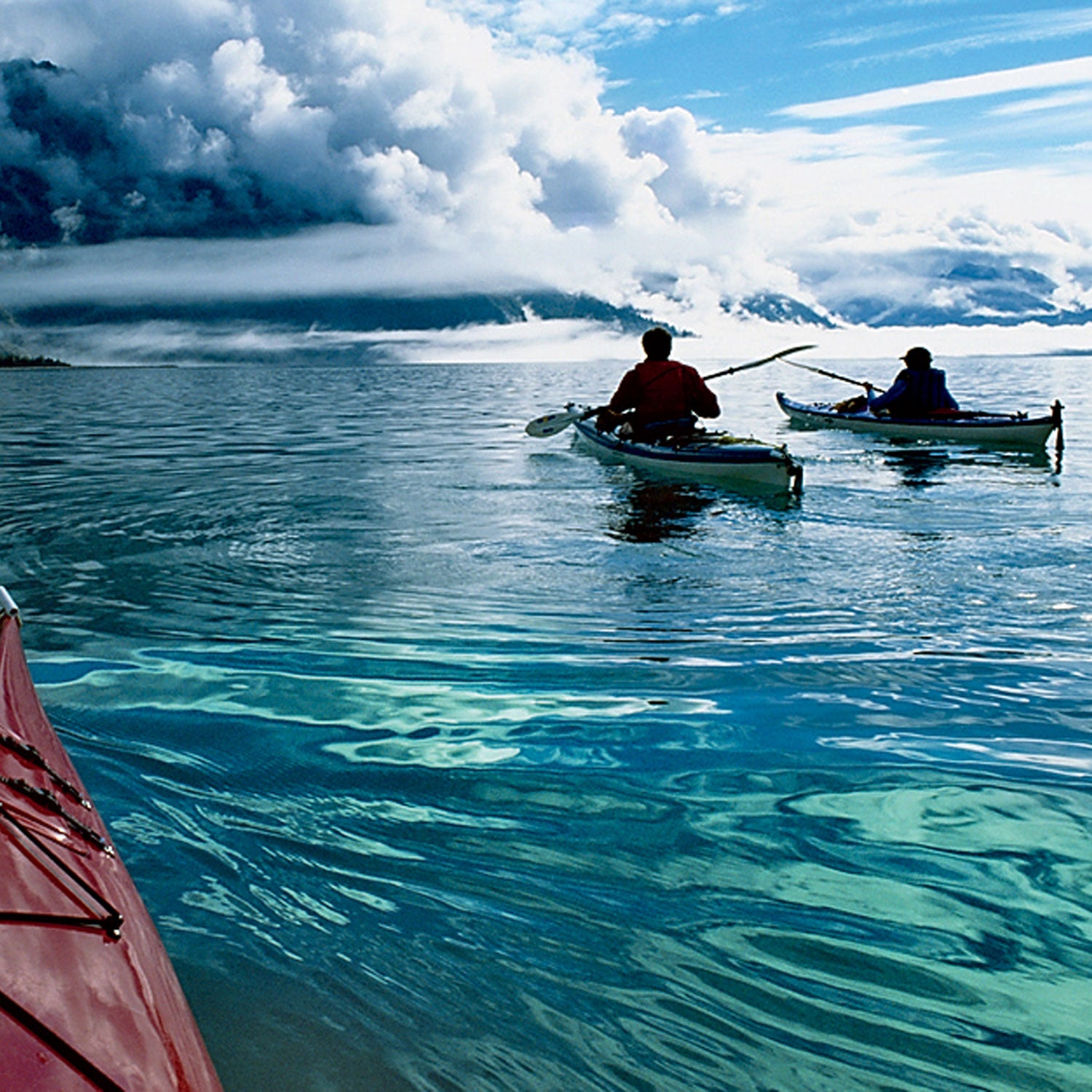Is there a way to find fresh adventure in our most╠řiconic (and well-traveled) wildernesses? Actually, there isÔÇöturn your next park visit into a quest. From wolf tracking to sand-dune shredding, these nine trips will get you far beyond the ranger station.
Cross the Border
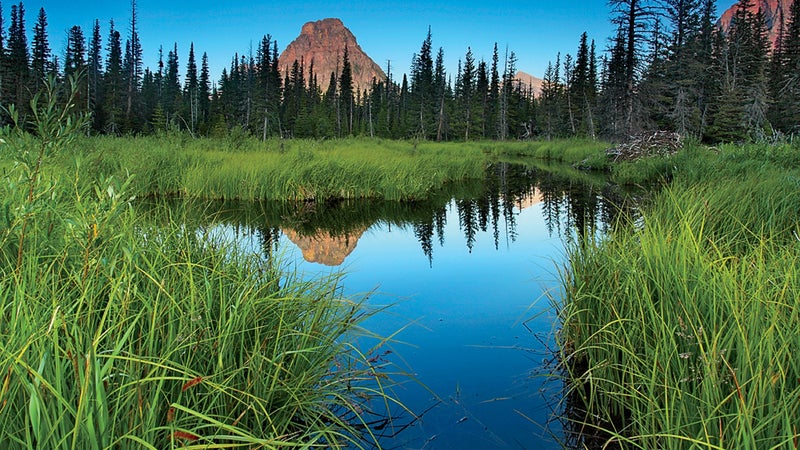
Glacier National Park, Montana, and Waterton Lakes National Park, Alberta
Pack your passport and credit card but keep your panniers light for this six-day╠řmission through the most majestic scenery south of Alaska. Start in Whitefish, Montana, where you can pick up a Jamis bike, panniers, tubes, a pump, and Clif Bars at╠ř╠ř(rentals, $160 per week), then head east to╠ř╠ř▓╣▓ď╗ň the╠řclassic, old-school╠ř, 11 miles into the park on the famous╠řGoing to the Sun Road (doubles, $127). The next day, things get steep and twisty: ride east up Going to the Sun, a 50-mile, switchback-filled monster that climbs on a 6 percent grade before topping out at the Continental Divide, at 6,646-foot Logan Pass. Set out earlyÔÇöyou need to reach Logan╠řbefore 11 a.m., when the road closes to ascending╠řcyclists until 4 p.m. ItÔÇÖs all downhill from there to the east side of the park, where you can crash at╠ř╠ř(doubles, $149) and load up on huckleberry pie at the╠ř. The following day, ride 27 miles to the border crossing at Chief Mountain, then another 19 to the╠ř, a six-story chalet on the shores of Waterton Lake (doubles, US$234). Take a day to hike around╠ř╠ř(try the 7.5-mile╠řBertha Lake out-and-back), then head south, crossing back into Glacier. Spend your last night at the╠ř╠řon Swiftcurrent Lake to complete your tour of the grand chalets (doubles, $149), and fill up on rib eyeÔÇö28 ounces of itÔÇöat the nearby log-walled╠ř. On your╠řfinal day, catch a complimentary shuttle back over Going to the Sun (climbing it once is enough) from the St. Mary Visitor Center to the town of Apgar, then coast back to Whitefish.
Go Dark
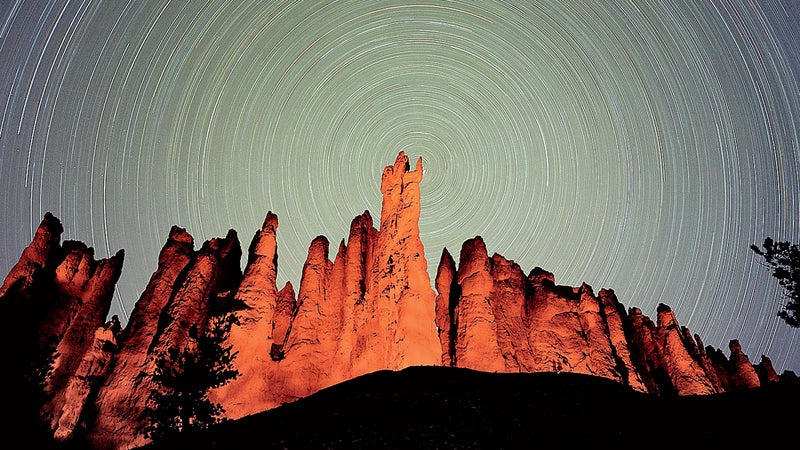
Bryce Canyon National Park, Utah
On May 20, a swath of the American West from Oregon to New Mexico will catch an╠řalmost complete solar eclipse. ThereÔÇÖs no better place to see this spooky phenomenon than╠ř. Why? In many places, the sun will set before the eclipse is over, but at Bryce it ends just a minute before sunsetÔÇömeaning that within a two-hour window youÔÇÖll see the sun set, rise, and set again against the parkÔÇÖs surreal hoodoo-studded landscape. Bryce is gearing up with 50 rangers and volunteer astronomy experts, who plan to narrate the event at the parking areas at Bryce Point and Inspiration Point and along the 1.5-mile trail that connects them. We recommend steering clear of all that. Instead, reserve a backcountry site at someplace like╠ř, three miles down the Under-the-Rim Trail from Bryce Point ($5), flag down a ranger for a couple of pairs of complimentary solar-viewing glasses (for safely staring directly into the eclipse), and watch the main event among mushroom-like sandstone formations. BYO performance enhancers.
Get Dirty
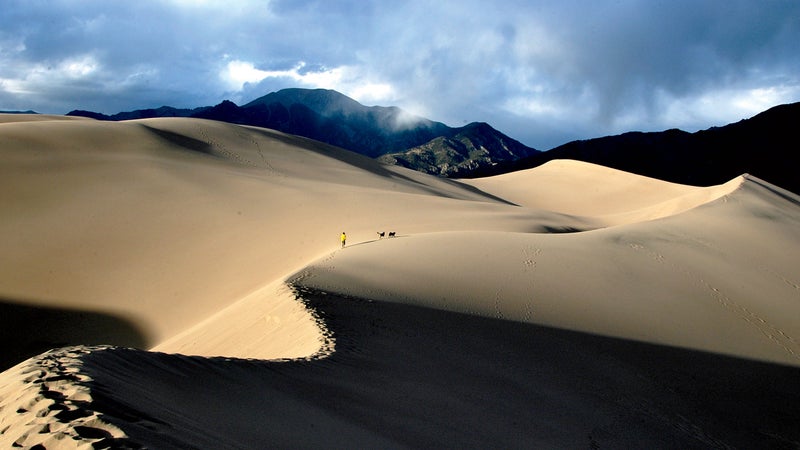
Great Sand Dunes National Park and Preserve, Colorado
Set among southern ColoradoÔÇÖs rugged Sangre de Cristo Mountains, Great Sand Dunes National Park is a terrific place to enjoy the splendors of nature. While going really, really fast. Sand sledding and sandboarding are serious business around these partsÔÇöthe park has 19,000 acres of dunes reaching 750 feet, and theyÔÇÖre open year-round. To get the scoop on how to best tear it up, we turned to Lon Beale, a.k.a. Doctor Dune, owner of Sand Master Park in Florence, Oregon. LonÔÇÖs tips: (1) Leave the plastic saucer at homeÔÇösand gouges plastic. You want a sled or (better yet) a board made of high-density thermoplastic. Rent one from╠ř╠ř($18) in Alamosa, 30 minutes from the park, and theyÔÇÖll throw in a puck of sandboard waxÔÇösimilar to snowboard waxÔÇöwhich you should rub onto the board every couple of rides. (2) Look for slopes of at least 20 degrees. ÔÇťIf itÔÇÖs 20 degrees, regardless of whether itÔÇÖs good or bad sand, youÔÇÖre gonna slide,ÔÇŁ says Beale. (3) Most locals head for the dunes close to the Point of No Return parking lot, two miles north of the visitor center. Beware of too-steep dunes, like the 34–degree slopes in the Castle Creek picnic area, which can plummet directly into the bed of Medano Creek. (4) Come early in the summer. Cold sand is fast sand, so skip a July or August visit, when the dunes can be as hot as an Abu Dhabi sidewalk. (5) After you return the rental board, wash the grit out of your throat with a couple of Grande River IPAs at AlamosaÔÇÖs San Luis Valley Brewing Company.
One-Up the Grand
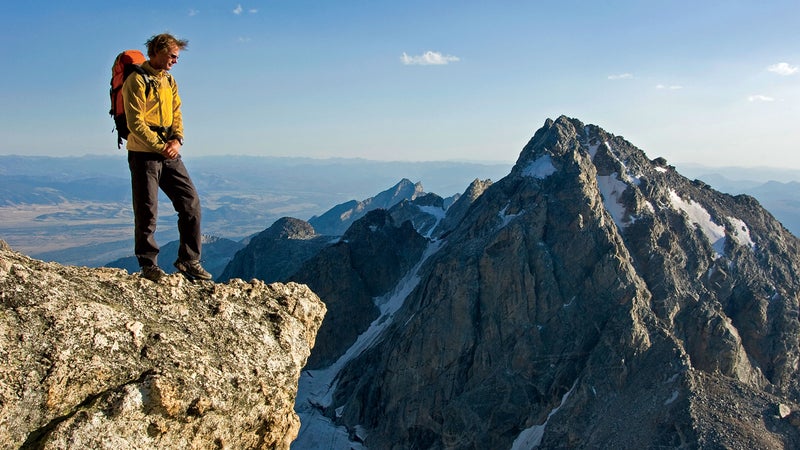
Grand Teton National Park, Wyoming
To climb the 13,770-foot Grand Teton, you need a rack, rope, harness, and the skills to use them safelyÔÇöor a $1,000 guide. The beauty of the GrandÔÇÖs neighbor, the 12,804-foot Middle Teton, is that itÔÇÖs a lot less likely to kill you, requires no ropes, and offers the same crazy views. (In fact, the view from the Middle Teton is arguably better, since it╠řż▒▓ď│Ž▒˘│▄╗ň▒▓§╠řthe Grand.) HereÔÇÖs how to do it: Go in August, when all the snow in the southwest couloirÔÇöthe╠řeasiest routeÔÇöhas melted. Pick up a╠ř╠řfor the Meadows campsites in Garnet Canyon, four miles into the 7.3-mile route ($25). In the morning, head for the saddle between the Middle and South Tetons, then hike 300 feet along the ridge until the southwest╠řcouloir comes into view. Get a dawn start so youÔÇÖre off the peak before noonÔÇöafternoon storms can rake the summits with lightning. Bonus: from the saddle between the two peaks, tagging the 12,514-foot South Teton adds only 1,000 feet of climbing.╠řAfter a long descent back to your car at Lupine Meadows, gorge on a calzone and Snake River Lager at╠ř, in the town of Moose, then crash back in town in a cozy cabin at the╠ř╠ř($195).
Float Free Water
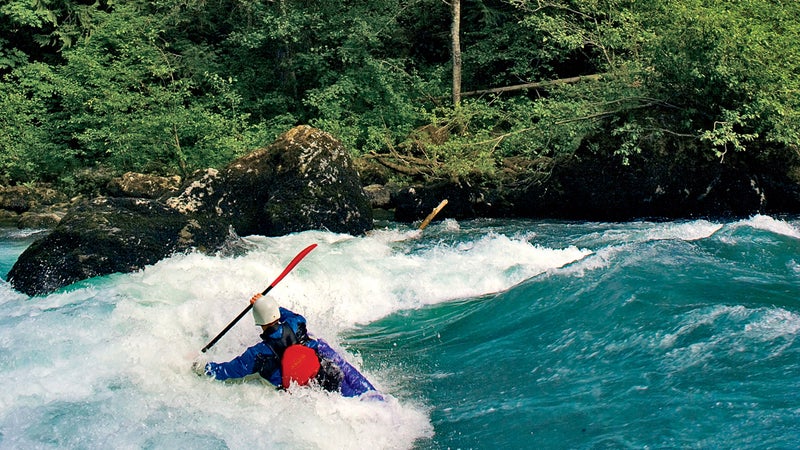
Olympic National Park, Washington
Olympic is in the midst of the largest dam-removal project in U.S. history: the dismantling of the Elwha RiverÔÇÖs 210-foot Glines and 108-foot Elwha dams, which will free some 70 miles of rollicking whitewater and serious salmon spawning grounds. Celebration is in order. Scope out the demolition derby from the observation spot above Elwha Dam (accessible via the Elwha Dam RV Park off Highway 112), where backhoes are knocking out the century-old plug. Then make for the whitewater. Port AngelesÔÇôbased╠ř╠řruns half-day trips between the two dams, putting in at Altaire Campground and taking out at the Highway 101 bridge, a half-dozen Class III rapids later ($54). Watch for eagles, ospreys, and elk. Your next move: set up shop in a shoreline cottage at historic╠ř╠ř($262), grab a two-day stand-up paddleboard rental from Olympic Raft and Kayak ($70), and splash around off the dock. Once youÔÇÖre feeling comfortable, make the 1.5-mile paddle across the placid lake to the DevilÔÇÖs Punch Bowl cove for some cliff jumping into the stunningly clear water. Then come back and gorge on pan-seared Muscovy duck breast, washed down with the lodge-brewed SingerÔÇÖs Tavern ale.
Buy Lobster Off the Boat
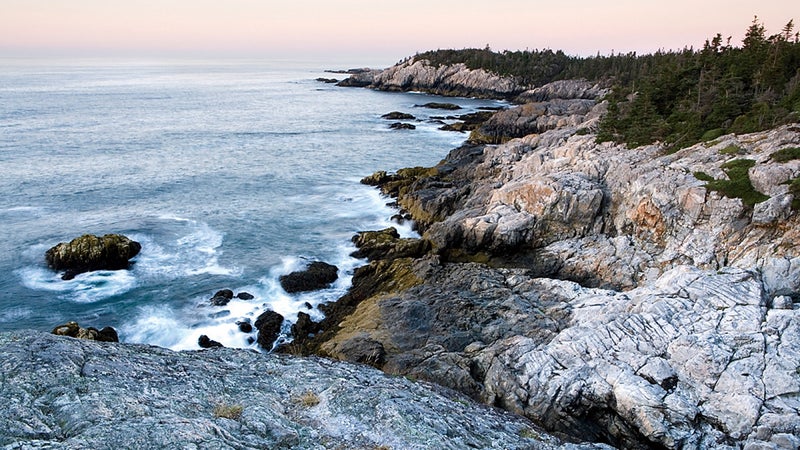
Acadia National Park, Maine
The only thing better than paddling╠řbetween empty islands for a few days? Doing so on a diet of fresh lobster. Isle Au Haut, a 10.6-square-mile spit of land just off the╠řharbor town of StoningtonÔÇöand 20 miles╠řsouthwest of bigger, more exposed (and trafficked) Mount Desert IslandÔÇöis the perfect base camp for a multi-day island hop among the mostly uninhabited Deer Isle╠řArchipelago. Rent a sea kayak, paddles, a spray skirt, and a chart from╠ř╠řin Stonington ($58 per day), and stow a big pot in your boat along with your gear bag and stove. Pick up a camping permit╠ř╠ř($25), then paddle six miles to Isle Au Haut, where you can crash in a lean-to at Duck Harbor Campground. Tip: the village (pop. 75) has a great chocolate shop, the╠ř. DonÔÇÖt try to circumnavigate Isle Au HautÔÇöthe southeast point is exposed, with few safe landings between cliffs. Instead, the next day, head to one of the many nearby sheltered but uninhabited islands, such as Russ, Wheat, or Little Sheep. En route, flag down a lobster boat. There will be plenty: Stonington is the busiest lobster harbor in the country. Expect to pay about $5 per pound; then steam, rather than boil, your haulÔÇöitÔÇÖs more fuel efficient and preserves the flavor better. Recipe: bring one inch of seawater to a boil, drop live lobster in, and keep the lid closed for 15 minutes. Serves two, and goes great with a cheap white wine or PBR.
Paddle Among Icebergs
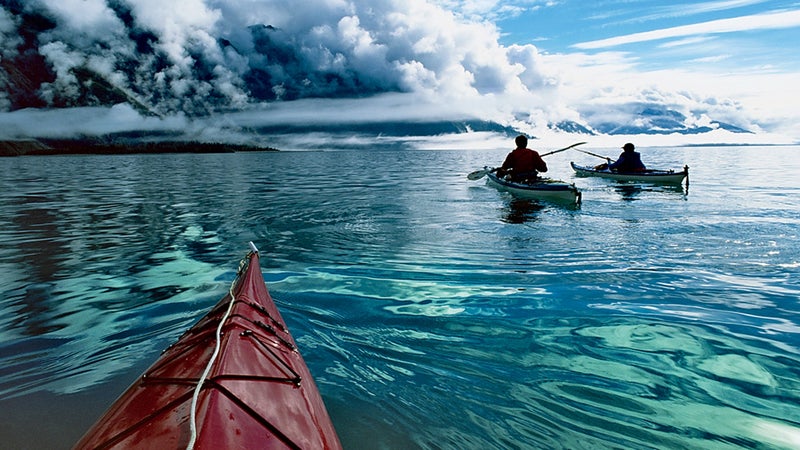
Glacier Bay National Park, Alaska
A 65-mile-long notch carved into 3.2 million acres of protected wilderness,╠ř╠řis like a WhitmanÔÇÖs Sampler of Alaskan hallmarks: humpback whales, orcas, seals, eagles, brown bears, and building-size columns of ice plunging into the sea. Since few trails and no roads reach beyond the mouth of the bay, most park visitors arrive on massive cruise ships. But the deck-bound guests arenÔÇÖt allowed into the rugged, narrow fjords of the parkÔÇÖs East Arm. From June through August,╠ř╠řcan guide you there on an eight-day sea-kayaking expedition, during which paddlers cover four to eight miles per day, sleeping on empty gravel beaches ($2,200). Guide Nacho StephensÔÇÖs favorite: the campsite just across from the McBride Glacier, where the inlet is so narrow that the tide rushes in and out at the speed of a flooding river, dragging massive icebergs as it goes.
Climb in Wonderland
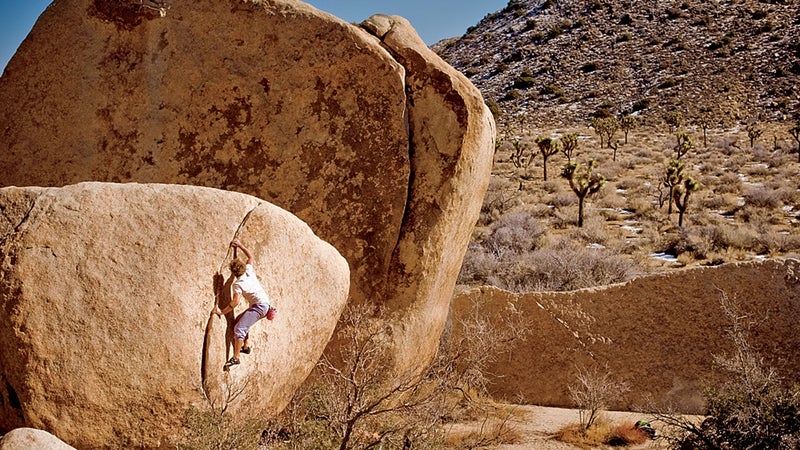
Joshua Tree National Park, California
Most visitors to╠ř╠řare content to traipse around in the desert, gawking at alien plants and strange geologic formations, like aptly named Skull Rock. But if staring up at the rocks leaves you with the jones to stand atop one, pack your harness, rack, and rope. There are more than 7,500 routes here, a mix of bolted and trad, all of them on remarkably clean monzogranite rock. Pitch your tent at the free╠ř╠ř(first come, first served), just off Park Boulevard about ten miles from the west-entrance station, and scamper up such classics as the three-pitch, 5.7-rated Walk on the Wild Side. For a little more solitude, park at Keys Corner, along Quail Springs Road, and make the hour hike into the North Wonderland area. The place is lousy with bouldering options. Or get higher on Dos Chi Chis, a fantastic two-pitch, 5.10-rated bolted climb that gets you right to the top of a lumpy crag for killer views of the entire park. New to climbing?╠ř╠řhosts three-day beginner camps in spring and fall in the Wonderland backcountry ($660).
See a Wolf
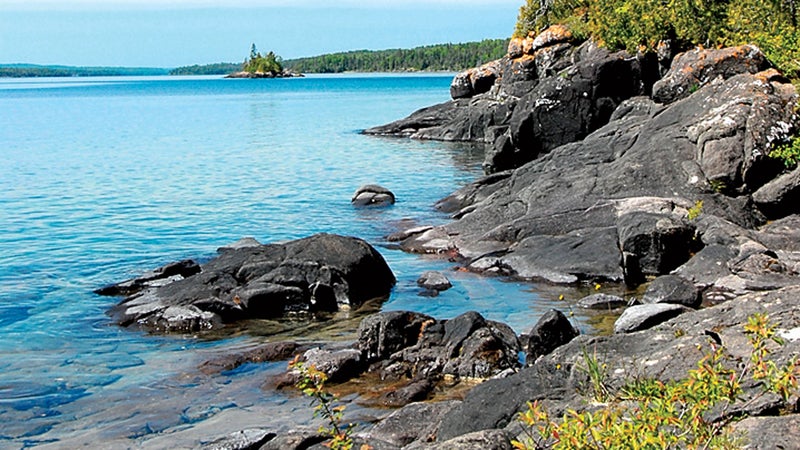
Isle Royale National Park, Michigan
This 45-mile-long, nine-mile-wide╠řwilderness is tough to reach: plopped in the northwest corner of rugged Lake Superior, itÔÇÖs a ninety-minute ferry ride from the nearest harbor. That isolation accounts for╠řÔÇÖs most╠řfamous residents: a pack of gray wolves whose adventurous ancestors crossed the ice here in 1948 in pursuit of moose.╠řUnfortunately, the pack has dwindled to just 16 members, a result of inbreeding; there are currently only two╠řfemales, meaning time could be running out for the canines. Take five days to traverse the 40-mile Greenstone Ridge Trail, which spans the islandÔÇÖs entire windswept spine, keep quiet, and if youÔÇÖre lucky youÔÇÖll catch a glimpse of the pack. If not, youÔÇÖre still in the most pristine boreal forest in the lower 48. Ride to Royale from Houghton, Michigan, on the parkÔÇÖs ship, the╠řRanger III,╠ř▓╣▓ď╗ň pick up a free╠ř╠řonboard (ferry, $100 round-trip; $4 visitor fee per person per day). Then traverse the footpath from the northeast at Lookout Louise to the southwest at Windigo, winding through maple and birch forests and up 1,394-foot Mount Desor, Isle RoyaleÔÇÖs highest point. There are 36 designated campgroundsÔÇöspend a night at Chickenbone Lake, a good swimming spot. Tip: go in late August, when swarming mosquitoes and blackflies are on their way out.
Park and Ride
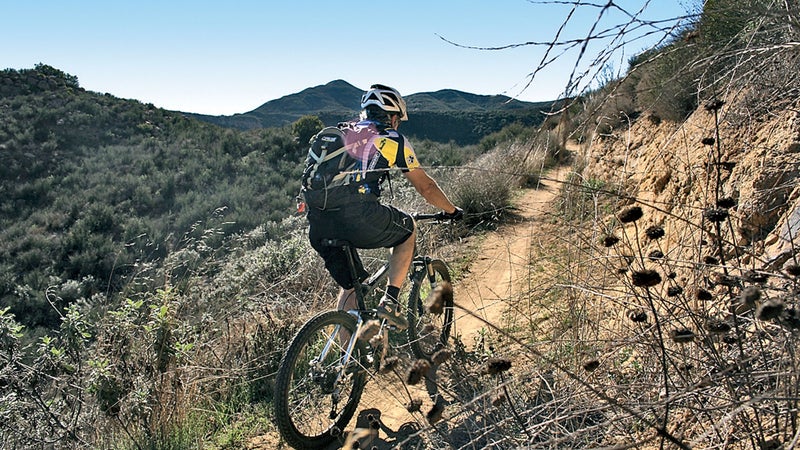
The best bike-friendly trails in the national park system
In 2005, the╠ř╠ř(IMBA) announced a partnership with the National Park Service to develop trails in parks. We rejoiced. Since then progress has been limited, due to an annoying regulation that classifies bicycles as motor╠řvehicles. (Ah, bureaucracy.) Nonetheless, the group is hacking through the red tape, recently helping KentuckyÔÇÖs╠ř╠řto rebuild 12 miles of buff intermediate trail and, this spring, planning to break ground on 13 miles of singletrack in╠řTexasÔÇÖs╠ř. While IMBA keeps fighting for our right to rip, hereÔÇÖs a primer on the best existing bike-friendly trails in the national park system.
Where:╠ř, California
Terrain:╠řSome 285 miles of rideable dirtÔÇöby far the most in the national park systemÔÇöslicing its way through the rugged╠řhighlands overlooking the Pacific Ocean, just 20 miles from downtown Los Angeles. Our pick: the rolling, 21-mile Sullivan RidgeÔÇôBackbone Trail loop cruises the divide between L.A. and the San Fernando Valley.
Nearest Rental:╠ř; $50 per day
Where:╠ř, Tennessee
Terrain:╠řFive trails with 38 miles of singletrack. Link the John Muir and Grand Gap trails for a 19-mile loop that skirts the edge of a sandstone gorge.
Nearest Rental:╠ř╠řin Knoxville; $40 per day
Where:╠ř, West Virginia
Terrain:╠řA new╠řsuperbuff 13-mile intermediate trail complex winds through hardwood forests. Start on the Arrowhead Trail.
Nearest Rental:╠řFayettevilleÔÇÖs╠ř; $35 per day


